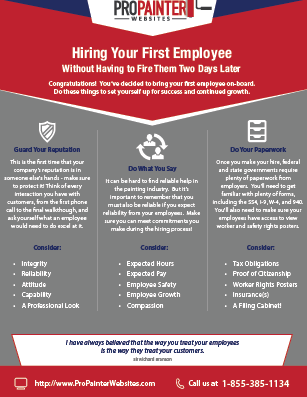Discover The Methods Which Seasonal Aspects Can Affect The Success Of Business Exterior Painting And Determine The Very Best Times To Accomplish Lasting Outcomes For Your Job
Discover The Methods Which Seasonal Aspects Can Affect The Success Of Business Exterior Painting And Determine The Very Best Times To Accomplish Lasting Outcomes For Your Job
Blog Article
Material Writer-Korsholm Whalen
When you're preparing a commercial external paint project, seasonal elements can make or break your results. You'll want to think about just how temperature and humidity influence paint application and drying out times. Picking the best season can guarantee your paint sticks appropriately and lasts much longer. Yet which periods are really the very best for this sort of work? Let's check out the crucial elements that can affect your project's success.
The Effect of Temperature on Paint Application
When you're preparing an industrial external paint job, the temperature can considerably affect how well the paint adheres and dries out.
Preferably, you intend to repaint when temperatures vary in between 50 ° F and 85 ° F. If it's too cold, the paint might not treat correctly, leading to problems like peeling or splitting.
On the flip side, if it's as well hot, the paint can dry also quickly, protecting against correct adhesion and resulting in an unequal surface.
You must also consider the moment of day; morning or late afternoon offers cooler temperatures, which can be more beneficial.
Always examine the manufacturer's recommendations for the certain paint you're making use of, as they frequently give guidance on the excellent temperature level variety for ideal results.
Humidity and Its Impact on Drying Times
Temperature level isn't the only ecological element that affects your industrial exterior painting task; humidity plays a significant role as well. High humidity degrees can slow down drying times drastically, impacting the total quality of your paint task.
When the air is saturated with dampness, the paint takes longer to cure, which can cause problems like bad attachment and a higher risk of mold growth. If you're repainting on an especially damp day, be gotten ready for prolonged delay times in between layers.
It's essential to keep an eye on local weather conditions and plan as necessary. Ideally, go for moisture levels in between 40% and 70% for optimum drying out.
Maintaining these factors in mind ensures your task stays on track and provides an enduring coating.
Best Seasons for Commercial Exterior Painting Projects
What's the best season for your business external painting jobs?
Springtime and very early autumn are normally your best bets. During these periods, temperatures are mild, and humidity levels are usually lower, creating perfect problems for paint application and drying out.
Stay clear of summer's intense heat, which can trigger paint to dry too swiftly, leading to inadequate bond and finish. Likewise, winter months's cold temperature levels can impede appropriate drying and curing, running the risk of the longevity of your paint work.
https://smalljobpaintersnearme09887.blogripley.com/35019053/essential-questions-to-pose-before-involving-home-painters for days with temperature levels between 50 ° F and 85 ° F for ideal outcomes. Remember to inspect the neighborhood weather prediction for rain, as damp problems can spoil your task.
Preparation around these variables guarantees your paint task runs efficiently and lasts longer.
Final thought
In conclusion, planning your commercial outside paint projects around seasonal factors to consider can make a significant distinction in the end result. By organizing job throughout the perfect temperatures and moisture levels, you'll ensure far better adhesion and drying out times. Bear in mind to keep an eye on local weather forecasts and select the right time of year-- spring and early loss are your best choices. Taking these actions will certainly help you achieve a sturdy and professional coating that lasts.
